Madagascar, the fourth largest island in the world, is a dream destination for nature enthusiasts. The island’s isolation for about 88 million years has allowed its plants and animals to evolve into unique species found nowhere else on Earth. This biodiversity hotspot is home to several national parks, each offering unique landscapes and wildlife experiences that are both enchanting and educational. Here’s a guide to some of the top national parks in Madagascar, their key attractions, and what visitors can expect during their journey into the wild.
Table of Contents
1. Andasibe-Mantadia National Park
Located approximately 150 kilometers east of Antananarivo, the capital city of Madagascar, Andasibe-Mantadia is perhaps the most famous of Madagascar’s national parks. It consists of two distinct areas: the small Réserve Spéciale d’Analamazaotra (often referred to as Perinet) and the larger Parc National de Mantadia. Together, they cover more than 150 square kilometers of rainforest, home to many species of lemurs, reptiles, and birds.
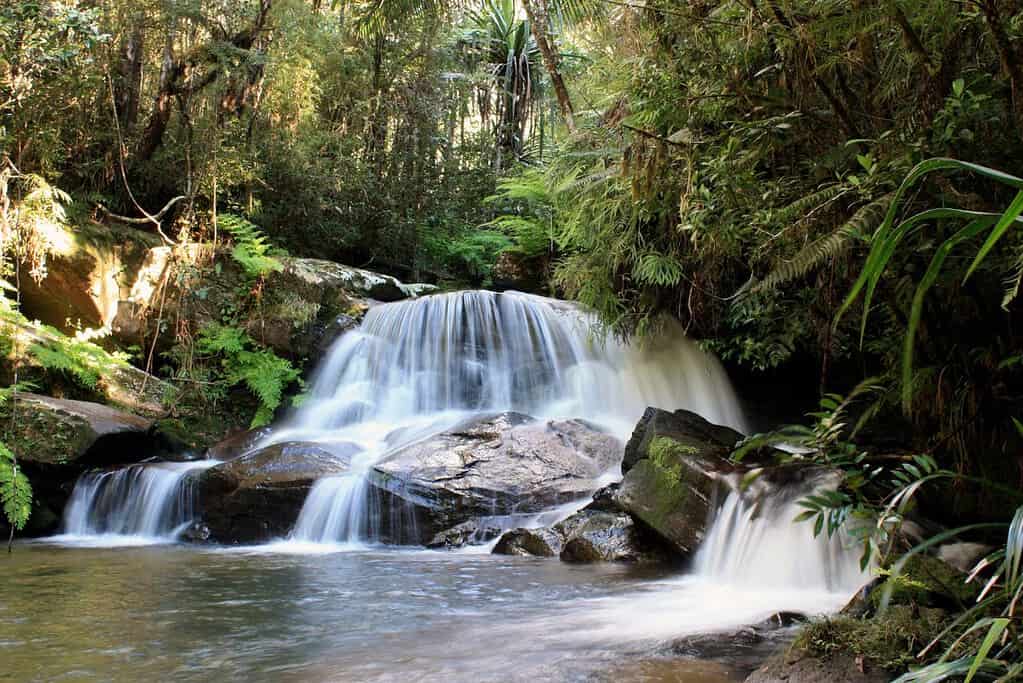
Key Attractions:
- Indri Indri: The park is renowned for the Indri, the largest living lemur species, whose haunting and beautiful calls can be heard up to 3 kilometers away.
- Night Walks: These guided tours offer the thrilling experience of spotting nocturnal creatures, including various species of mouse lemurs and chameleons.
Visitor Experience:
Expect to trek through humid rainforests and navigate sometimes muddy and challenging trails. The park’s rich biodiversity makes it a prime spot for wildlife photography and bird watching.
2. Ranomafana National Park
This park, located in the southeastern part of the island, covers more than 41,000 hectares and was established in 1991 to protect the newly discovered golden bamboo lemur. Ranomafana has since become one of the most important ecological sites in Madagascar.
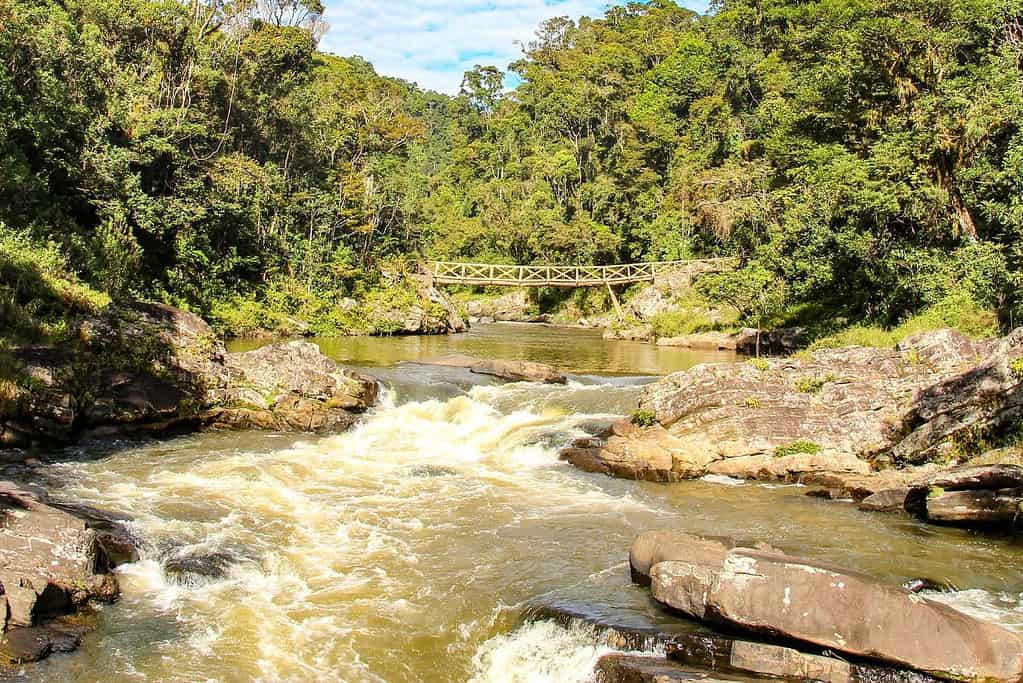
Key Attractions:
- Diverse Ecosystems: From lowland rainforest to highland cloud forest, the park offers varying environments and a wide range of wildlife.
- Thermal Springs: After a long day of hiking, visitors can relax in the natural hot springs from which the park gets its name (Ranomafana means “hot water” in Malagasy).
Visitor Experience:
Trails range from easy to strenuous, and the higher altitude areas can be quite cool and misty. Guided night walks are also available here, offering a glimpse into the lives of the park’s nocturnal species.
3. Isalo National Park
Isalo National Park is quite different from Madagascar’s other parks, featuring sandstone formations, deep canyons, palm-lined oases, and grasslands. The park covers 815 square kilometers and is located in the southwest of the island.
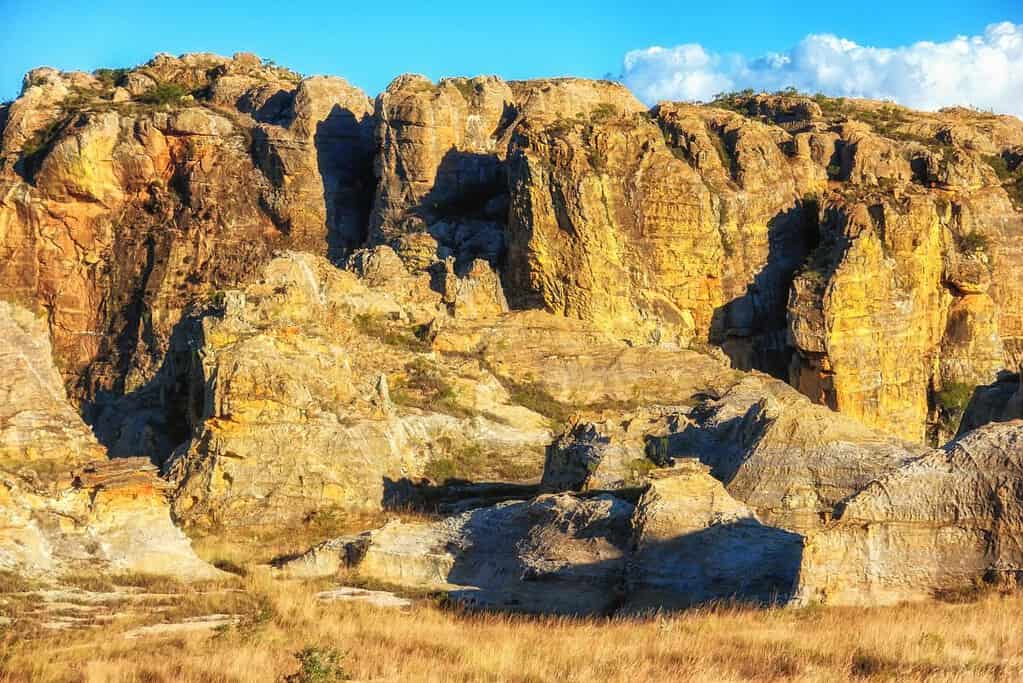
Key Attractions:
- Canyon des Singes: Trek through this “Canyon of Monkeys” to see ring-tailed lemurs and sifakas.
- Natural Swimming Pools: The park’s natural pools, notably the “Piscine Naturelle,” provide a refreshing dip amidst stunning scenery.
Visitor Experience:
Isalo is ideal for those who love hiking and rock climbing. The landscape offers panoramic views, dramatic sunsets, and the chance to see a different side of Madagascar’s diverse ecosystems.
4. Masoala National Park
Covering nearly 2,300 square kilometers of rainforest and including three marine parks, Masoala National Park is located in northeastern Madagascar. This park is one of the best places to see the endangered red-ruffed lemur.
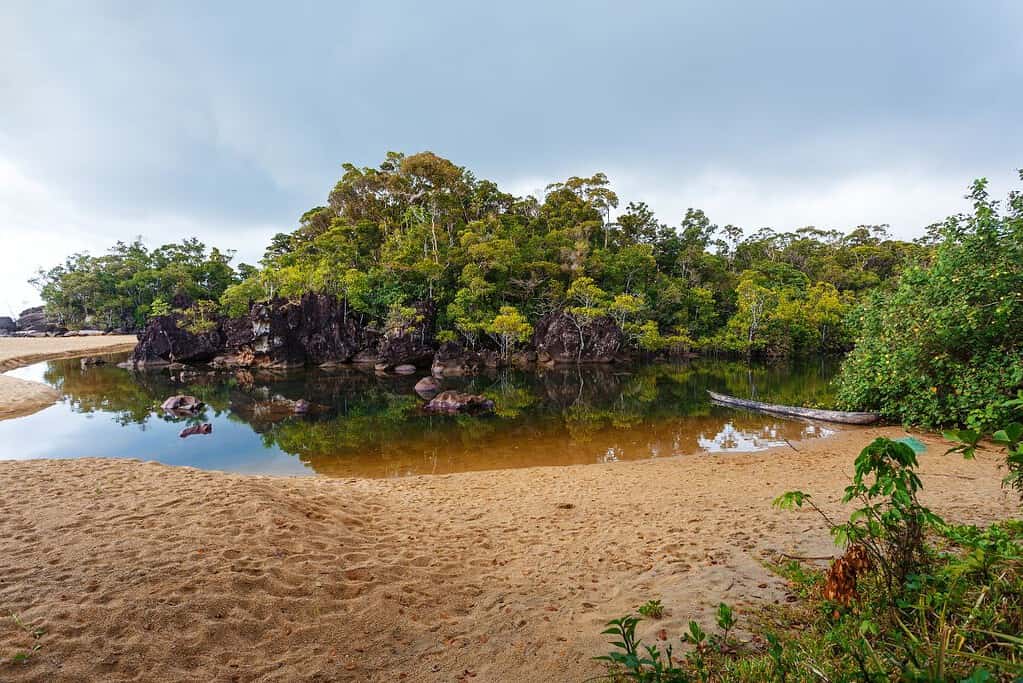
Key Attractions:
- Marine Reserves: The park extends into the sea, offering snorkeling and diving opportunities to see coral reefs and marine life.
- Rainforest Canopy Walkway: This aerial bridge provides a unique perspective of life in the treetops, potentially spotting lemurs and exotic birds.
Visitor Experience:
Visitors should be prepared for a wet and wild adventure as Masoala is one of the wettest areas in Madagascar. The park offers both land-based and water-based activities, making it a comprehensive ecological tour.
5. Tsingy de Bemaraha National Park
Located in the western part of Madagascar, Tsingy de Bemaraha is a UNESCO World Heritage site famous for its limestone karst landscapes. These jagged, needle-shaped limestone formations, known as “tsingy,” provide a dramatic and unique environment that is as harsh as it is beautiful.
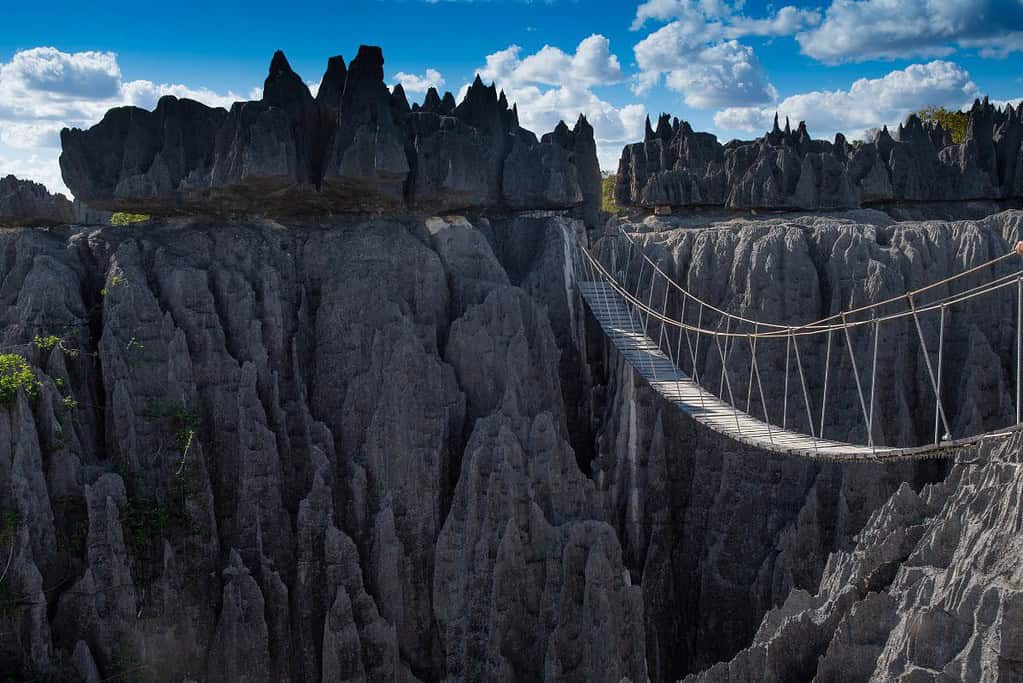
Key Attractions:
- The Great Tsingy: This is the largest and most impressive area of limestone karst, where visitors can traverse via a system of bridges and ladders, offering breathtaking views and opportunities to spot various species of lemurs and birds.
- Manambolo River Gorge: A river trip or a hike along the gorge offers spectacular views of the towering rock walls and rich wildlife.
Visitor Experience:
Visiting Tsingy de Bemaraha requires a good level of fitness and comfort with heights, as navigating the park involves climbing and walking through rugged terrain. The park is remote, so be prepared for basic accommodations and services.
Planning Your Visit
When planning a trip to Madagascar’s national parks, consider the following tips:
- Best Time to Visit: The dry season (April to October) is the best time for wildlife viewing as fewer rains make the trails more accessible.
- Health Precautions: Consult with a travel doctor for necessary vaccinations and malaria prophylaxis.
- Local Guides: Hiring a local guide is not only mandatory in most parks but also ensures you get the most out of your visit, with insights into the local flora and fauna.
Madagascar’s national parks are not just about seeing unique wildlife but also about understanding the importance of conservation and the role each visitor plays in it. Whether you’re a birder, a photographer, or simply a lover of nature, Madagascar offers an unparalleled experience of the natural world.
Read the Madagascar article here.
